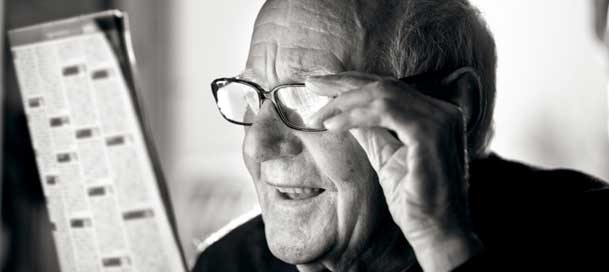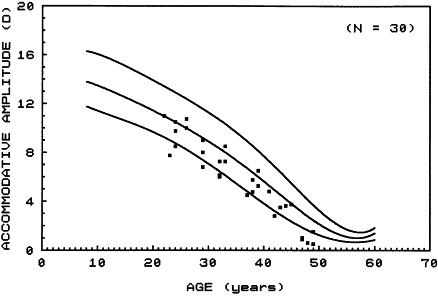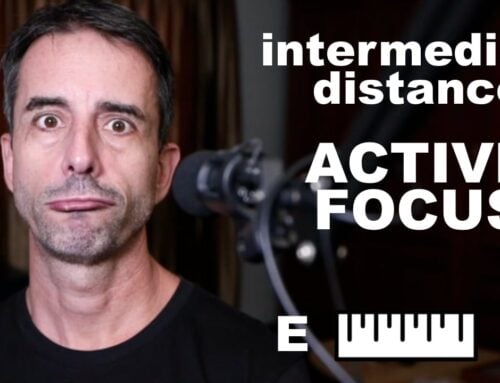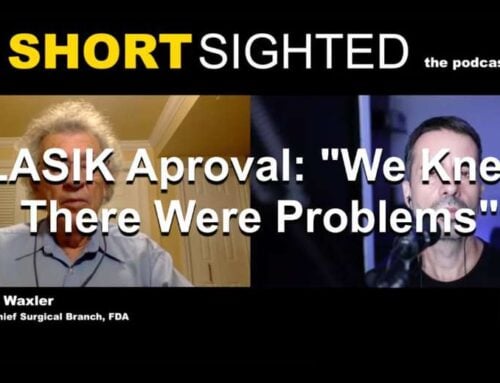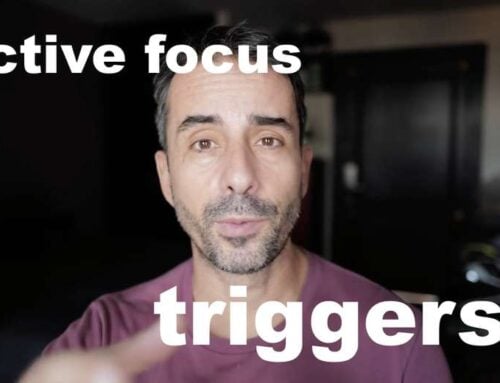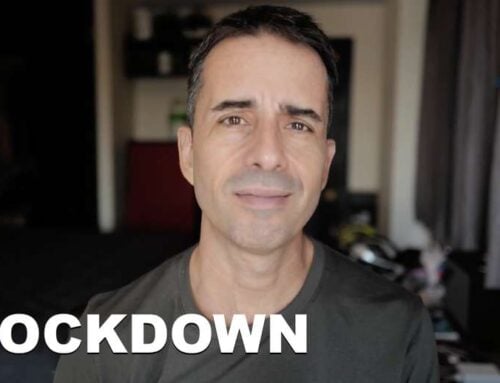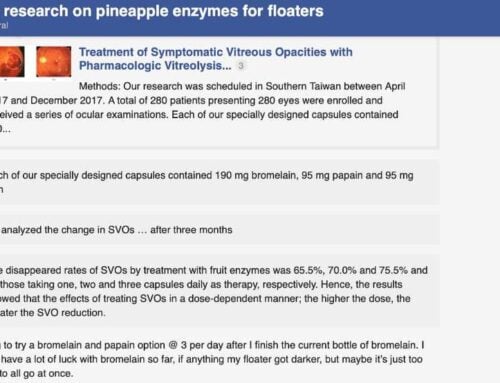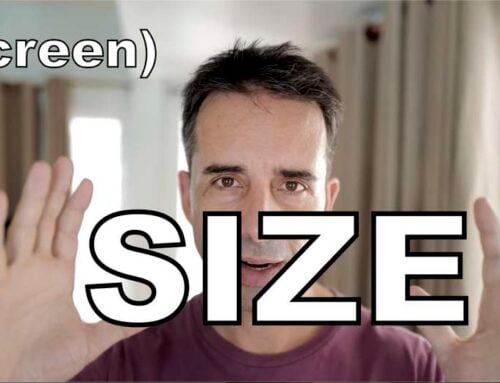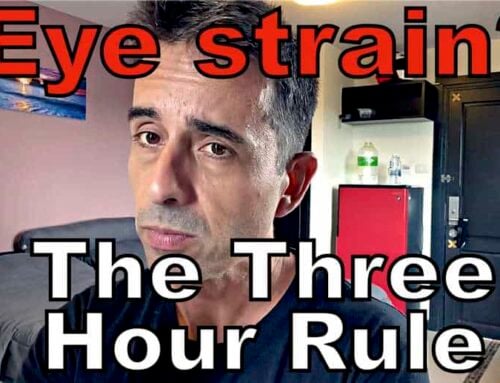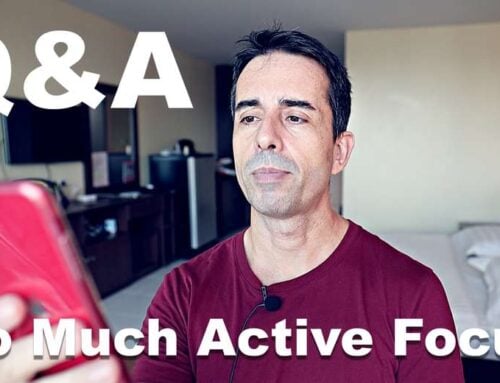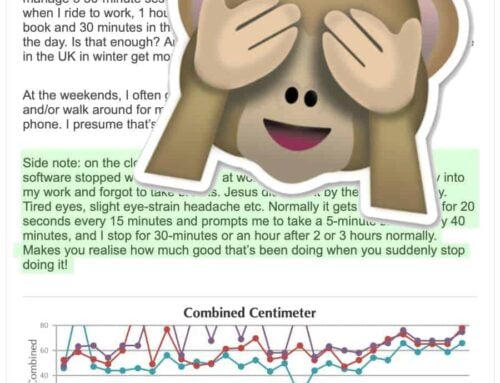Presbyopia is another way our bodies like to rub it in that we don’t stay young forever:
— You can head over to the whole page discussing presbyopia on eyewiki. There are a number of contributing causes that have been identified for the condition. Accommodative amplitude, mentioned above, is a big subject, and is covered in exhaustive detail in a number of studies, like this one: — You can click over to sciencedirect for whole article discussing all the details of accommodation. There are other factors, such as the the lens that is moved by your focusing muscle to move the focal point in your eye, becoming less flexible with age. Why am I telling you all this? Mostly just to bore you to tears. While you are staring at your screen, forgetting to blink, your tear fluid rate is reduced significantly. Bored to tears, at least we fixed that problem, which should concern you more today than the causes of presbyopia. But you can prevent at least some of the age related causes of presbyopia. So let’s get to that part: By the time you ask that question, it’s already a bit late. These age related conditions are best dealt with preventatively. If you don’t want to be all hunched and skin and bones, you need to start with the gym 20 years before that even becomes an issue. There is that curve-of-everything, you know the one of decline. Muscle mass, bone density, you name it, you’re loosing a bit of it every day. The best we can do is be aware of this, and slow down that curve as much as possible. There aren’t a whole lot of conclusive long terms studies about presbyopia prevention and treatment, at least not in Western medicine. I can give you anecdotal evidence, from my own practice. I haven’t seen much presbyopia at all in clients, even those in their 60’s and older (for those who started myopia prevention and rehab in their 40’s and younger). It is quite rare that any of my past clients ended up needing reading glasses. But I’m just one person, and my recollection is by now means good scientific basis. The fact remains that we do loose accommodative range. We do tend to loose less, if we practice active focus, challenge our vision, get a good amount of distance time, and apply all the other aspects of eye health. And since we are in fringe territory, let me show you some of the things that visit scientific principles of study – even though they don’t fall into our Western mindset of medicine. Behold the China Journal of Traditional Medicine and Pharmacy (thanks to Jake for having pointed that one out): The aim of this research is to explore an effective way to treatment the presbyopia by applying Traditional Chinese medical technique of physiotherapy.Methods: This research lasts for almost one year and takes 200 patients with presbyopia aged from 45 to 55 as the research participants.In detail,these patients would be evenly composed of men and women and divided into two groups: one is the experimental group while the other one is the control group.Under the guidance of traditional Chinese medical theories,the participants’ acupuncture points in experimental group could be stimulated by some therapies such as traditional Chinese medicine fumigation,acupoint massage,filiform needle therapy,ear-acupuncture therapy,external application and so on.Meanwhile,the vision condition of each patient is also tested and recorded in every three months.Results: According to the results of one-year observation,the total efficiency rate of experimental group is 91%,raised by 67%,which is obviously higher than the rate of control group.Conclusion: In this study,the researchers employed traditional Chinese medical technique of physiotherapy to stimulate patient’s acupuncture points,and the fact proved that the therapy is effective,safe and operational. — Visit CNKI for more on presbyopia prevention and treatment, from a different perspective. Now, I am not specifically advocating having needles stuck in your face, or anywhere else. What you do want to consider is that there is more out there than just the status quo of “too bad, you are old, here are some glasses”. You want to be familiar with this site and concepts, even though they are meant to deal with an entirely different symptom basis. The reason it is still valid for presbyopia is because so much of what we talk about goes back to a) eyesight health and b) stimulus activity. Your accommodation range decreases with age. Most studies I read take into zero account the eye health practices of the participants. If you were to do a heart disease risk study, wouldn’t you want to account for the participant’s exercise, diet, and general health? This hasn’t made it much into vision sciences yet, where any and all participants appear to be treated as the same baseline. I speculate that a great deal can be done by challenging your accommodation on a daily basis. You already get plenty of close-up time, and distance time (hopefully), so it isn’t much of a leap to get into active focus, create a blur horizon, and keep full spectrum UV ambient lighting in most of your day. If you are new here and those topics are unfamiliar to you, take a look in the top menu, under “guides”, for much more on those subjects. Enjoy healthy eyesight today!![]() Presbyopia is the irreversible loss of the accommodative ability of the eye that occurs due to aging. Accommodation refers to the ability of the eye to increase its refractive power of the crystalline lens in order to focus near objects on the retina.
Presbyopia is the irreversible loss of the accommodative ability of the eye that occurs due to aging. Accommodation refers to the ability of the eye to increase its refractive power of the crystalline lens in order to focus near objects on the retina.![]() Although the progressive reduction in accommodative amplitude with increased age is well documented, little is known about several other aspects of static or steady-state accommodation to provide a comprehensive assessment of changes related to age and presbyopia. Static components of accommodation (tonic accommodation, depth-of-focus, slope of the stimulus/response function, and accommodative controller gain) were assessed objectively using an infrared (IR) optometer in 30 human subjects aged 21–50 years; depth-of-focus was also determined psychophysically as was accommodative amplitude.
Although the progressive reduction in accommodative amplitude with increased age is well documented, little is known about several other aspects of static or steady-state accommodation to provide a comprehensive assessment of changes related to age and presbyopia. Static components of accommodation (tonic accommodation, depth-of-focus, slope of the stimulus/response function, and accommodative controller gain) were assessed objectively using an infrared (IR) optometer in 30 human subjects aged 21–50 years; depth-of-focus was also determined psychophysically as was accommodative amplitude.Can You Treat Presbyopia?
Research on the presbyopia prevention with TCM technique of physiotherapy
How To Prevent Presbyopia

